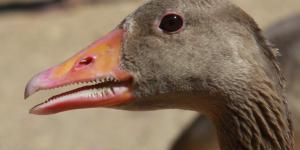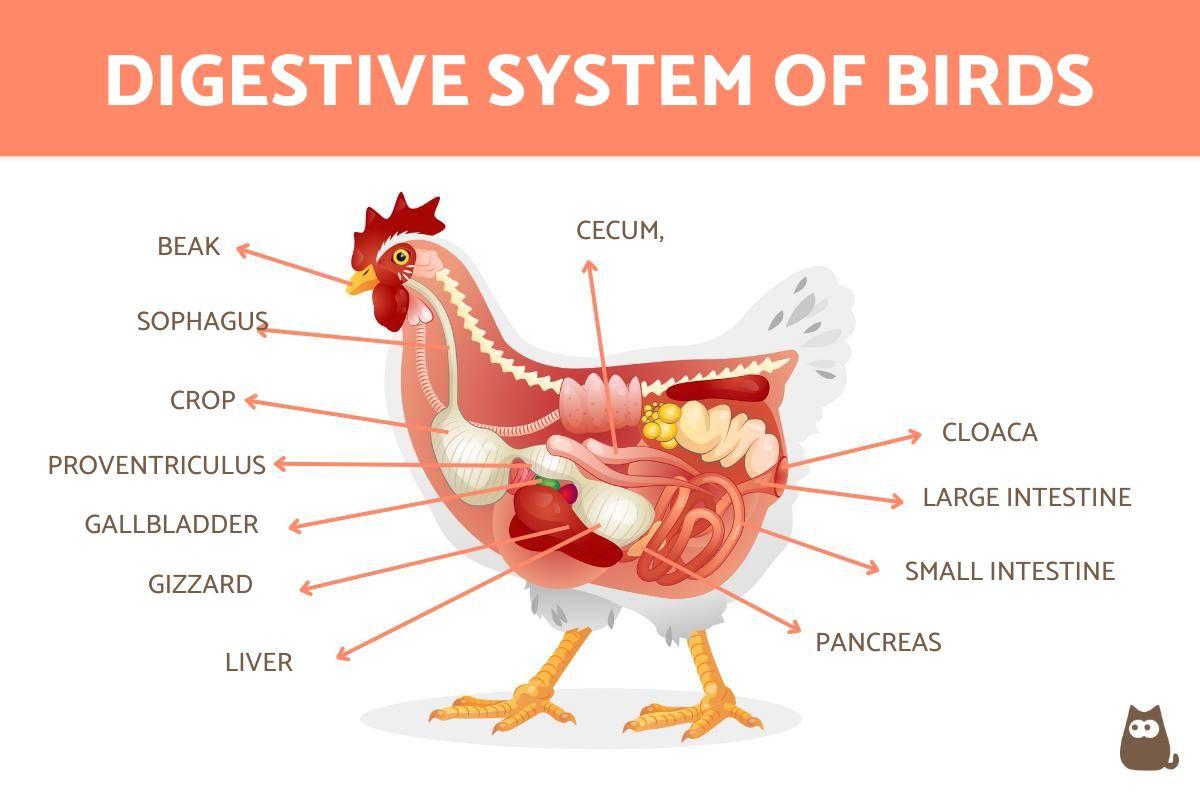Avian Digestive System - How Do Birds Eat?


Have you ever wondered how birds are able to digest their food, given their unique anatomy and physiology? Understanding the digestive system of birds is essential for bird owners and lovers, as it can affect their health and well-being. Unlike mammals, birds lack teeth and a separate stomach for breaking down food. Instead, they have specialized organs such as the crop, proventriculus, and gizzard that help them break down food mechanically and chemically. Whether you are an experienced bird owner or just curious about bird anatomy, read on to learn more.
In this article, we'll take a closer look at the digestive system of birds, including the various organs involved.
Characteristics of the digestive system of birds
The bird digestive system is a specialized and efficient process that enables birds to extract maximum nutrition from their food. Let us take a look at some of its most important features:
- Unlike mammals, birds lack teeth and have a leathery, thin tongue that is sometimes sticky.
- Their salivary glands are not well-developed, and they produce a type of mucus that replaces saliva and mixes with food.
- Although birds have a sense of taste, they have few taste buds.
- Specialized organs such as the crop, proventriculus, and gizzard aid in breaking down food mechanically and chemically.
- The stomach produces gastric juices and digestive enzymes to absorb nutrients efficiently.
- A population of microorganisms such as bacteria, fungi, and protozoa plays a vital role in breaking down complex carbohydrates and producing essential nutrients.
- Birds often ingest small stones to store in the crop, which facilitates food processing.
- Some species produce a substance called crop milk, used to feed chicks due to its high nutritional value.
- Carnivorous birds accumulate indigestible parts of their prey, such as hair, skin, and bones, and regurgitate them.
Do not miss this other article where we discuss what are carnivorous birds.

Modifications according to the bird's diet
Birds have a unique and diverse digestive system that is responsible for breaking down food and converting it into nutrients for the body. Despite being smaller and lighter than other animals, their digestive system has adapted to accommodate their flying ability.
As birds have diverse diets and feeding habits, their digestive systems are adapted accordingly.
Carnivorous birds
Carnivorous birds they have adaptations in their digestive system to handle a diet of meat. They have a short digestive tract and a powerful stomach that produces strong acids to break down the protein and connective tissues in their prey. They also often accumulate the indigestible parts of their prey, such as hair, skin, and bones, in a special organ called the gizzard, and then regurgitate them as pellets.
Granivorous birds
Granivorous birds have a specialized digestive system that is adapted to process the hard, indigestible seeds that they consume. They have a muscular gizzard, which is a specialized organ that grinds up the seeds with the help of small stones or grit that they swallow. The gizzard is lined with a tough, keratinous lining that can withstand the abrasive action of the stones and can break open the seeds, allowing the nutrients to be released. Granivorous birds also have a well-developed crop, which is an expandable pouch in the esophagus that allows them to store and soften the seeds before they enter the gizzard. Additionally, granivorous birds have well-developed salivary glands that produce a sticky saliva that helps to moisten the seeds and aids in their digestion.
Frugivorous birds
Frugivorous birds have a relatively simple digestive system because they eat mostly fruits, which are already broken down and contain easily digestible sugars. As a result, they do not need a powerful, muscular gizzard to grind and break down tough seeds. Their digestive tract is relatively short, allowing food to pass through quickly. Additionally, frugivorous birds have a relatively small ceca, which are pouches that are found at the junction of the small and large intestines, and play a role in fermenting cellulose in some animals.
Mixed diet birds
The digestive system of mixed-diet birds has some characteristics of both granivorous and insectivorous/frugivorous birds. These birds have a gizzard, which helps to break down tough food items, and a muscular stomach that contains acid and digestive enzymes to further break down food. However, mixed-diet birds also have a special sphincter muscle located between the stomach and the small intestine that regulates the movement of food. This sphincter can selectively allow small fruit particles to pass through into the intestine while retaining larger food items, such as insects, in the stomach to be further broken down.
Continue reading this other article on herbivorous birds.
Parts of the digestive system of birds
The avian digestive system is a complex and fascinating structure that consists of unique and shared parts with other vertebrates. Let's take a closer look at the different components that make up the digestive system of birds:
- Beak: This structure is the starting point of the digestive system and is crucial for food intake. Its shape and size are specialized depending on the type of food the bird eats. The beak has a bony base consisting of the nasal, maxillary, mandibular, and mandibular skeleton, which is covered with a hard tissue that protects the beak. The tongue also adapts to the shape of the bird's beak.
- Esophagus: The esophagus begins in the trachea and extends to the beginning of the stomach. It is an elongated structure through which food flows and where the crop is located. The crop is an important site for food processing.
- Crop: The crop is an enlarged area of the esophagus that varies in shape and size depending on the species. In some species, crop milk is produced here to feed young birds. In others, it may serve as a food reservoir that is bacterially fermented.
- Stomach: The bird's stomach consists of two parts: the proventriculus and the gizzard. The proventriculus is an elongated structure where acidic gastric juices are secreted, which initiates digestion due to their low pH. The gizzard has the task of mechanically breaking down food thanks to a group of muscles that it possesses. Some bird species ingest gastroliths, small stones or sand, to aid in the mechanical processing or crushing of food.
- Intestine: The intestine includes areas such as the jejunum and ileum, where the chemical digestion of food takes place, aided by bile salts and digestive enzymes. Villi in this tissue absorb nutrients. The length of the intestine varies depending on the bird's diet, being longer in birds that eat grains and herbs and shorter in carnivorous birds.
- Appendix: The appendix (cecum) is located between the intestine and the rectum and hosts a large population of bacteria that decompose plant matter not yet present in the intestine. It apparently aids in the immune response of certain bird species.
- Large intestine: Almost no nutrient absorption occurs in the large intestine, where water is removed from the incoming remains and substances to be excreted are prepared. The final product of digestion ends here, forming the fecal mass.
- Cloaca: The cloaca is the final part of the digestive system in birds and serves as the common opening for the urinary, reproductive, and gastrointestinal tracts. The fecal matter and urine are excreted through the cloaca. In addition, the dorsal area of the cloaca in young birds contains the "bursa of Fabricius," a specialized lymphoid organ that produces B-lymphocytes, which play a crucial role in the bird's immune response.
Do not miss this other article on birds that cannot fly.
If you want to read similar articles to Avian Digestive System - How Do Birds Eat?, we recommend you visit our Facts about the animal kingdom category.
- Bailey, R. (2019). Avian digestive tract health . Available at: https://es.aviagen.com/assets/Tech_Center/BB_Foreign_Language_Docs/Spanish_TechDocs/AviagenBrief-GutHealth-2019-ES.pdf
- Hickman, C.; Roberts, L.; Parson A. (2000). Comprehensive principles of zoology . McGraw Hill Inter-American: Spain.






